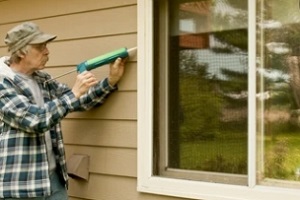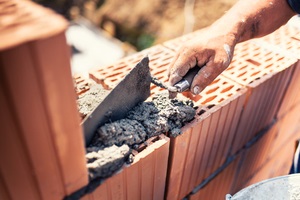 Whether you are deep into a home renovation project or are just considering how you can protect the structure and integrity of your home over the long term, one of the most commonly overlooked areas is caulking. With your eye on larger projects like siding, paint and trim, you may not even notice that your caulk is worn, or you may forget that you need to caulk after a new installation. When it comes to applying exterior caulk, there are a few important things that you should keep in mind.
Whether you are deep into a home renovation project or are just considering how you can protect the structure and integrity of your home over the long term, one of the most commonly overlooked areas is caulking. With your eye on larger projects like siding, paint and trim, you may not even notice that your caulk is worn, or you may forget that you need to caulk after a new installation. When it comes to applying exterior caulk, there are a few important things that you should keep in mind.
Why Caulking Should Not Be Overlooked
One of the most important things that you should know about caulk is why it is important and what its job is. Caulk, whether interior or exterior, serves as a barrier that seals off gaps. These could be the joints where two types of materials meet, such as between a sink and its countertop, or it could be areas where there are gaps after an item has been installed, such as the space between a door frame and your home.
Caulk keeps air from passing through these areas, which ensures that your home stays warm in the winter and cool in the summer. Caulk also repels moisture and other intruders like pests, so that you can keep the outside, well, outside. Failure to properly caulk can result in damage to your interior structures, such as your subwalls and insulation.
Identify Problem Areas Ahead of Time
As you begin your caulking project, look around and make sure you understand the full scope of the project. It does no good to begin caulking only to realize that you need to paint or patch a small area first; paint is always best done underneath the caulk. Also, keep an eye out for dissimilar materials, because anywhere they meet, you could probably use some caulk. This could help you to identify joints that you see so commonly you do not really give them any consideration.
How to Caulk Windows
When it comes to caulking windows, you will need to ensure that you understand the proper strategy. Always caulk the trim around the top and sides, where your home meets the window. However, for most types of window trims, be sure not to caulk and seal the bottom. As condensation builds near your window, it needs a place to escape; if you caulk the bottom too, you may end up with cloudy windows. Similarly, the weep holes, which serve as drains for some types of windows, should be left uncaulked so that they can do their job.
Caulking Doors and Frames
Doors and their frames come with a large number of intersecting elements with your home, which means multiple places that will require new or updated caulk. The area where the door frame and threshold meet can be of particular concern, as are points where trim touches the door frame or your home’s siding. If your door has panels, such as with some garage doors, each panel will require its own caulk. Do not forget out-of-mind areas like pet entrances, which should be fully sealed all the way around!
Working with Masonry
 Brick and concrete are notorious as tough, weather resistant materials, but even they require careful caulking to ensure that moisture is repelled appropriately. Any areas of your home that feature wood siding meeting with masonry should be thoroughly and carefully caulked, as porous materials such as brick can hold on to water for some time, allowing the joining wood to become soggy and rotten if not properly sealed.
Brick and concrete are notorious as tough, weather resistant materials, but even they require careful caulking to ensure that moisture is repelled appropriately. Any areas of your home that feature wood siding meeting with masonry should be thoroughly and carefully caulked, as porous materials such as brick can hold on to water for some time, allowing the joining wood to become soggy and rotten if not properly sealed.
It is best to use clear caulk on brick and other stone types, as white caulk typically looks gaudy. Caulk is typically best applied after you have painted, sealed or otherwise modified your wood to your liking, as this produces a more uniform and aesthetically pleasing result.
Trust the Experts to Apply the Right Caulk the Right Way the First Time
Whether you are considering your home’s caulking needs for the first time or you are ready to tackle a project that has been on your mind for some time, it is important that your caulking is done right. While many people assume that caulking is a simple DIY project, the best and most consistent results are achieved by professionals who have years of experience in laying down smooth caulk that properly adheres and seals for lasting effect.
The experts at Waterproof Caulking & Restoration would be happy to help you achieve your goals for your caulking project. Reach out to schedule an appointment to discuss your vision and how your project is best achieved.
